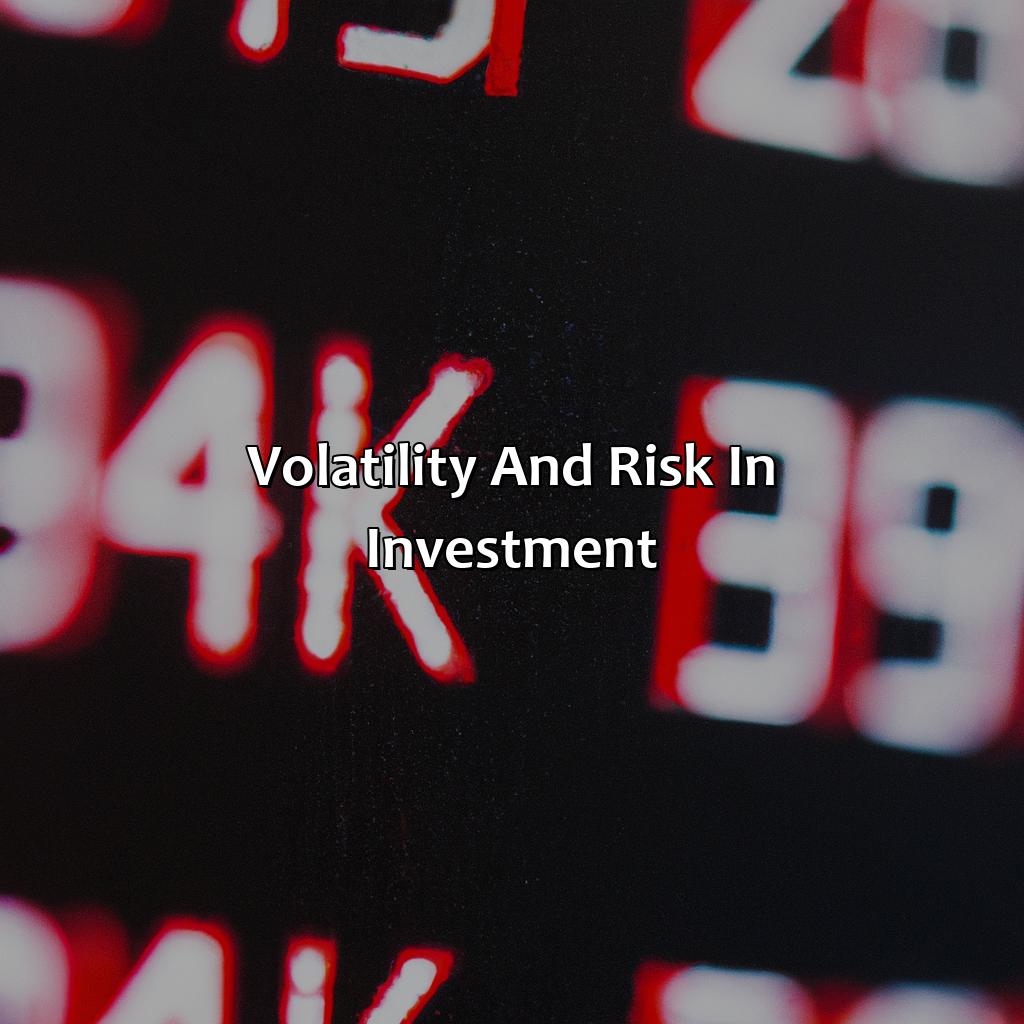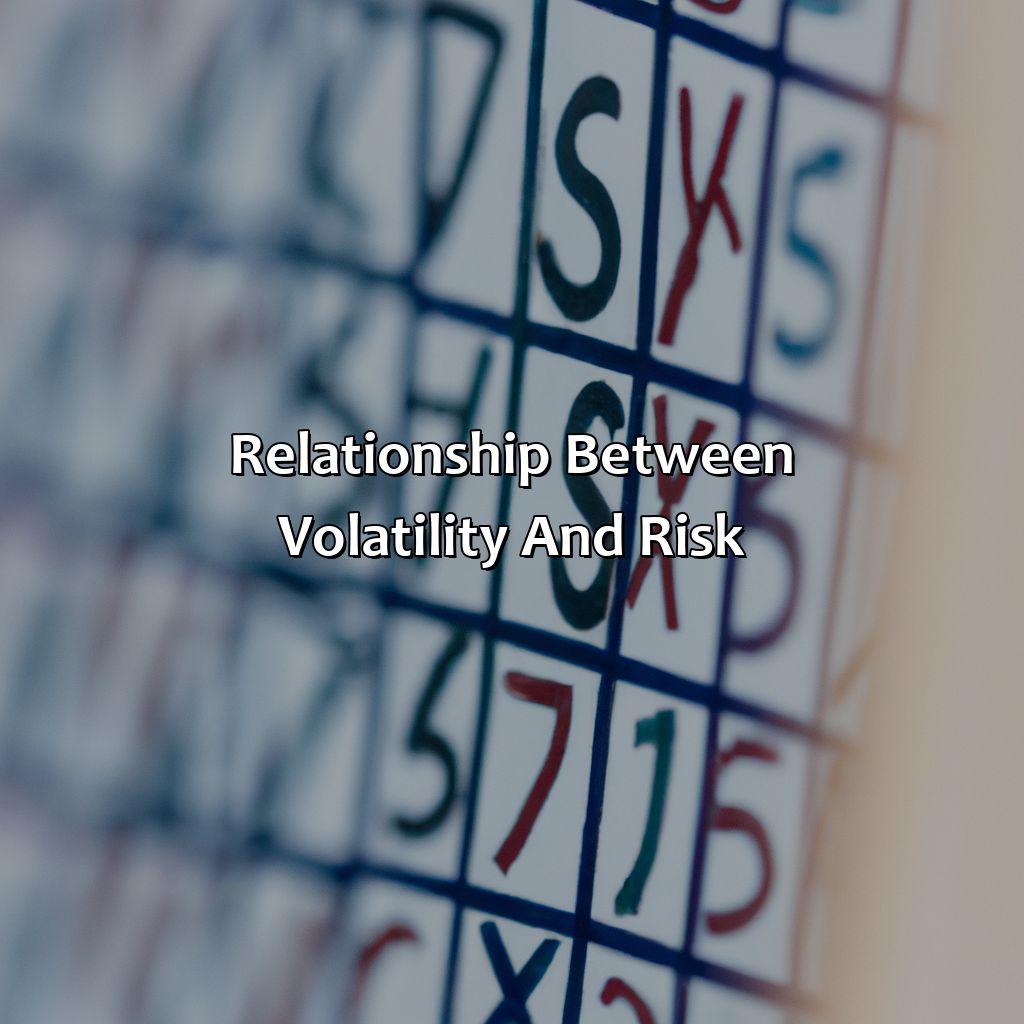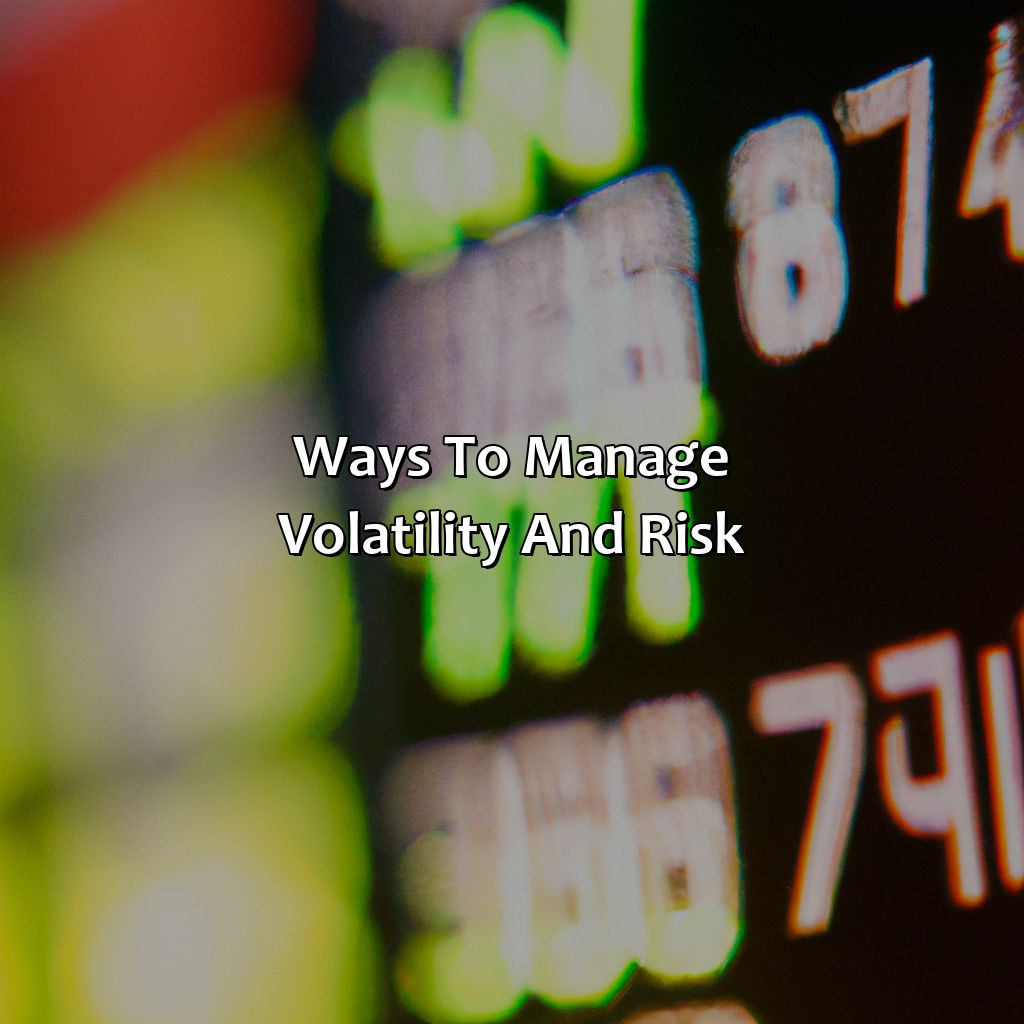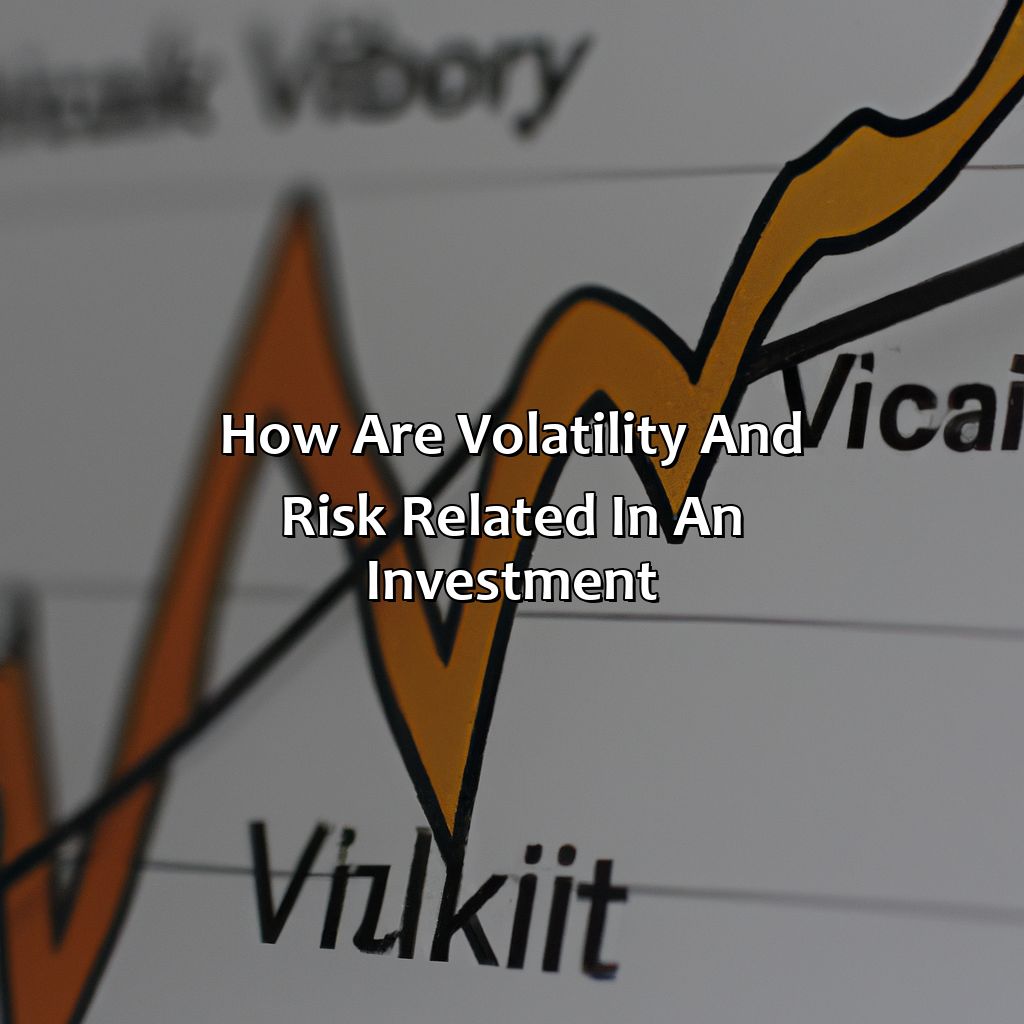How Are Volatility And Risk Related In An Investment?
Key Takeaways:
- Volatility is a measure of how much the price of an investment fluctuates over time, and risk refers to the likelihood of losing money on that investment. High volatility often results in high risk, while low volatility may lead to lower risk.
- Managing volatility and risk requires diversification, meaning investing in a variety of assets to spread out risk. Asset allocation is also important, with the percentage of each asset class determined by an investor’s risk tolerance and investment goals. The use of options such as a put option can also help manage risk.
- It is important for investors to understand the relationship between volatility and risk and how to manage both in order to make informed investment decisions and potentially minimize losses.
Understanding the relationship between risk and volatility is essential for smart investors. You may have heard that high volatility means high risk, but is that true for all investments? Find out in this article.
Volatility and Risk in Investment
Want to grasp how risk and volatility intertwine in an investment? Get clear with the definitions of each! Defining volatility and risk will give you a better view of how they factor into investment choices. We’ll explore this topic further in “Volatility and Risk in Investment” which contains two sub-sections:
- “Definition of Volatility”
- “Definition of Risk.”
Let’s dive in!

Image credits: retiregenz.com by Harry Arnold
Definition of Volatility
Volatility refers to the degree of fluctuation in a security or investment’s price over time. It is calculated as the standard deviation of the returns generated by an investment. Volatile investments have higher potential for gains but also carry a higher risk of losses. Investments with lower volatility may provide more stable returns but with a lower chance of significant gains. Understanding volatility is essential for making informed investment decisions and managing risks associated with portfolio diversification.
Risk is like a box of chocolates; you never know what you’re gonna get, but you hope it’s not a mouthful of broken teeth.
Definition of Risk
Risk in Investment: Understanding its Significance
Investing comes with inherent uncertainty and unpredictability, which can lead to potential losses. Risk is the chance of losing money or not achieving anticipated returns due to factors beyond an investor’s control. It is a crucial element that needs to be managed effectively for successful investment outcomes.
Risk in investment has multiple dimensions, including market risk, credit risk, and liquidity risk. Market risk refers to the possibility of financial losses due to unfavorable changes in market conditions such as fall in stock prices or fluctuations in interest rates. Credit risk pertains to the likelihood of a borrower defaulting on debt payments, causing financial damage to investors. Liquidity risk represents the inability to buy or sell assets fast enough without affecting their price.
Managing investment risk is essential for achieving profitable returns while protecting capital from potential losses. Diversifying investments across different asset classes, regions, and sectors can be an effective strategy for reducing risks by spreading out investments and minimizing exposure to any single asset class or sector.
Volatility is like the rebellious teenager in your investment portfolio, while risk is the worried parent trying to keep things under control.
Relationship between Volatility and Risk
Understand the bond between volatility and risk when it comes to investing. Look at the part named “Relationship between Volatility and Risk“. This will give you knowledge of how high volatility equals high risk, and low volatility equals low risk.

Image credits: retiregenz.com by James Jones
High Volatility Results in High Risk
Investments with high volatility are considered riskier due to the unpredictability of market movements. This is because, in such investments, the price of an asset can fluctuate rapidly and dramatically in a short period, leading to increased uncertainty. Therefore, it is essential to understand that High Volatility Results in High Risk.
This relationship between volatility and risk can lead to significant losses or gains, depending on how the investor approaches their investment decisions. When investing in volatile assets, one must have a higher level of risk tolerance and invest for the long term since markets tend to balance over longer periods.
It’s worth noting that there’s a trade-off between return and risk when it comes to investments. Individuals willing to take on higher levels of volatility must also aim for higher expected returns than those who select safer portfolios.
You know what they say, low volatility results in low risk…and low excitement.
Low Volatility Results in Low Risk
The correlation between volatility and risk is a crucial aspect to consider while making investments. Lower the volatility, lower the associated risks with the investment. This factor becomes particularly important in the current financial market scenario where investors are constantly seeking secure investment options.
The primary reason for this relationship is that fluctuations in price create a sense of uncertainty and unpredictability, directly influencing an investor’s decision-making process. Higher levels of volatility imply higher potential upsides and downsides, resulting in an increased likelihood of significant losses/returns. Consequently, investments such as bonds and fixed deposits, which offer lesser returns but comparatively low volatile groundings, are perceived to be less risky than equity-based investments.
One must understand that low volatility is not synonymous with no risk at all; it still holds a degree of risk associated with it. Still, it considerably tones down the risk from potentially significant movements in prices. This inherent aspect must be considered before making any final decisions.
During the 2008 financial crisis, we saw first-hand how interlinked volatility and risks can be used due to their evident relationship. Following the crisis period, investors became more cautious about stock price fluctuations and were inclined towards safer options like bonds and fixed deposits with relatively predictable behavior patterns.
Thus it can be concluded that lower volatility stocks should be preferred when investing due to their relatively stable nature compared to higher volatile counterparts – reiterating how the variables ‘volatility’ and ‘risk‘ share a strong bond during investments’ decision-making process.
Managing volatility and risk in investments is like trying to navigate through a minefield with a blindfold on – better have a solid strategy in place.
Ways to Manage Volatility and Risk
To reduce volatility and risk, you need to take action! Diversification, asset allocation, and options are some strategies that may help. These will reduce portfolio risk and boost investment returns in the long run. Let’s explore them further.

Image credits: retiregenz.com by Harry Jones
Diversification
In the realm of investments, the practice of spreading out funds across different assets is known as portfolio diversification.
By doing so, investors can manage risk and volatility in a more effective manner. Diversification allows for better protection against the possible losses that may arise from investing in a single asset or sector. As such, this strategy provides a range of investment opportunities with varying levels of risk and return.
Investors should consider both horizontal and vertical diversification methods when building their portfolios. The former entails investing in assets from various industries or sectors, while the latter involves spreading investments across asset classes like stocks, bonds, real estate or commodities.
Specific securities can also be diversified by acquiring those with different characteristics such as market capitalisation or dividend yield. This lowers potential risks associated with company-specific fluctuations. A well-diversified portfolio helps investors adapt to constantly changing market conditions that are beyond one’s control.
A tip for successful diversification is to ensure that all holdings are not highly correlated with each other. Different asset types behave differently under certain economic conditions which allow portfolios to maintain balance amidst volatility. Therefore, it is critical to monitor and assess portfolio diversity periodically to determine its effectiveness in managing risks successfully.
Why put all your eggs in one basket when you can diversify your portfolio and watch the volatility crack under pressure?
Asset Allocation
The process of spreading investments across different asset classes is crucial to manage portfolio risk and optimize returns. By diversifying the asset allocation, investors can maximize the gains while minimizing the impact of market fluctuations. This practice involves assigning a percentage of available capital to various assets like equities, fixed income securities, cash or alternative investments such as real estate or commodities.
Through a strategic asset allocation approach, investors can balance their investment objectives with the risk tolerance level. By monitoring market trends and identifying opportunities in diverse sectors, an optimal asset mix can be maintained for long-term success. A dynamic asset allocation strategy may adjust the investments regularly based on changing market conditions and expose investors to potential profitable ventures.
Furthermore, a disciplined approach towards asset allocation is essential for achieving portfolio growth and risk management goals. A good example is seen in the investment philosophy of Benjamin Graham who developed a strategy of imposing maximum limits on equity holdings so that risks could be mitigated effectively. Applying such principles today using tools like modern portfolio theory and factor-based investing enhances investors’ chances of building better portfolios with high expected returns adjusted for risk.
In summary, proper management of assets within a portfolio offers significant advantages over undiversified investments by providing greater flexibility to adapt to fluctuating market conditions while protecting against downside risks over time. Strategic balancing allocations with analytical tools and dynamic tactical deployment can help secure considerable long-term gains from diverse set-ups that ride over ups and downs alike without fail.
Options may not be the answer to all your problems, but they sure do give you a lot of new ones to worry about.
Use of Options
Options Trading for Managing Volatility and Risk
Options trading is a widely used method to manage volatility and risk in investment. It provides flexibility to investors in their strategies, allowing them to hedge against losses and generate profits through price movements. The use of options can provide different benefits such as reducing costs, enhancing returns, controlling risks, and diversifying portfolios.
- Cost Reduction: Option strategies can lower the cost of investing by reducing premium levels.
- Increased Returns: With options, an investor can profit in both rising markets (call options) and declining markets (put options).
- Risk Control: Options provide downside protection or prevent losses caused by sudden market crashes.
- Diversification of Portfolio: Options trading can broaden the range of available investments, providing investors with added diversity for their portfolios.
In addition to traditional option trading which involves buying or selling put or call options, modern methods are emerging that allow sophisticated hedging strategies like gamma scalping and delta hedging. These strategies require complex calculations based on different elements such as option prices, underlying asset prices, expiration dates and more.
Research shows that using options strategically can help control portfolio risk while providing the potential for increased returns. According to a study conducted by the Chicago Board Options Exchange (CBOE), a portfolio divided into 50% stocks & 50% S&P500 Index puts had significantly less risk than a portfolio invested in just shares.
A true fact is that American economist Myron Scholes and Canadian economist Fischer Black developed the Black-Scholes model in 1973 which helps calculate the theoretical value of financial derivatives including stock options.
Managing volatility and risk is like trying to navigate a minefield blindfolded, but with these tips, at least you’ll have a map.
Importance of Understanding Volatility and Risk in Investment.
Understanding the correlation between volatility and risk is essential in investment planning. Investors who overlook these factors are bound to face negative outcomes in terms of returns on investment. Proper knowledge of volatility and risk mitigation strategies can result in a more stable and predictable investment scenario.
The level of volatility can dictate the various levels of risk involved in an investment. Stocks with high levels of volatility generally pose more significant risks compared to those with lower volatility. Therefore, investors must assess the level of market fluctuation and analyze how likely it is for any stock to experience price changes.
It’s important to recognize that although low-risk investments may generate smaller returns, they tend to have less volatility, leading to increased stability over time. Overall, individuals who take unplanned risks tend to incur losses due to poor management decisions.
Investments that involve understanding market trends always hold uncertainties. Hence investors must remain updated by analyzing the performance indicators affecting their portfolio regularly.
Five Facts About How Volatility and Risk are Related in an Investment:
- ✅ Volatility and risk are both measures of uncertainty in an investment. (Source: Investopedia)
- ✅ Higher volatility generally leads to higher risk in an investment. (Source: The Balance)
- ✅ Some investments, such as stocks, may have higher volatility and risk than others, like bonds. (Source: Fidelity)
- ✅ Investors can manage risk and volatility through diversification, asset allocation, and other strategies. (Source: Charles Schwab)
- ✅ Volatility and risk are not the same as a loss in investment value, and may present opportunities for growth for some investors. (Source: Forbes)
FAQs about How Are Volatility And Risk Related In An Investment?
How are volatility and risk related in an investment?
Volatility and risk are closely related in an investment. When an investment has high volatility, it means that the returns can fluctuate significantly in a short period of time. Hence, it increases the risk associated with the investment.
Why is it important to understand the relationship between volatility and risk in an investment?
Understanding the relationship between volatility and risk is crucial for investors as it helps them make informed decisions about their investments. If an investment has high volatility but low risk, it might be a good investment opportunity. However, if an investment has high volatility and high risk, it might not be worth taking the risk.
What are some examples of investments with high volatility and high risk?
Some examples of investments with high volatility and high risk include stocks of newly formed companies, penny stocks, derivatives, and foreign currency.
Can an investment have low volatility and high risk?
Yes, it is possible for an investment to have low volatility but high risk. For example, investing in a single stock can have low volatility but high risk because the entire investment is dependent on the performance of that one stock.
How can investors mitigate risk in investments with high volatility?
Investors can mitigate risk in investments with high volatility by diversifying their portfolio. This means investing in a variety of assets and not putting all their eggs in one basket. Additionally, investors can also use hedging strategies like buying put options to protect themselves against any potential losses.
What are some investments with low volatility and low risk?
Some investments with low volatility and low risk include treasury bonds, bank deposits, and money market funds. These investments offer low returns but are relatively safe and provide a stable source of income for investors.


